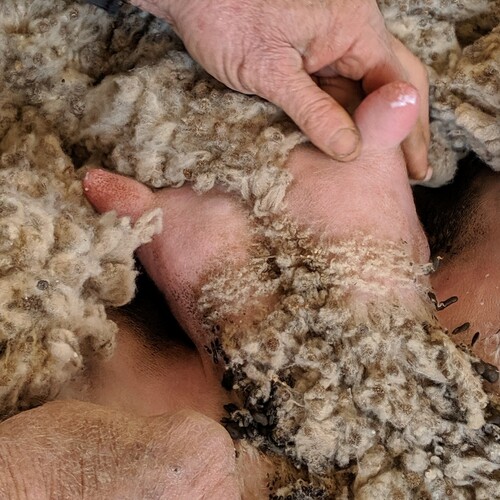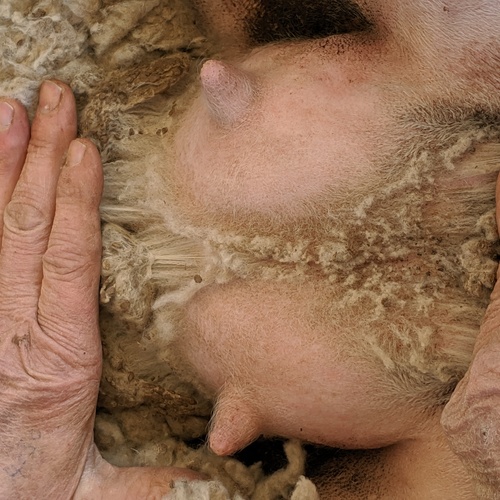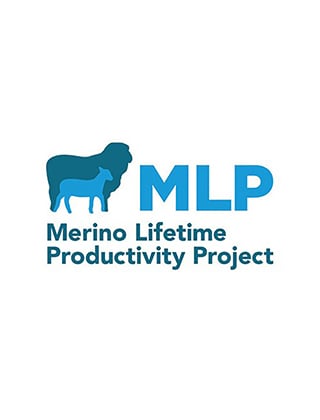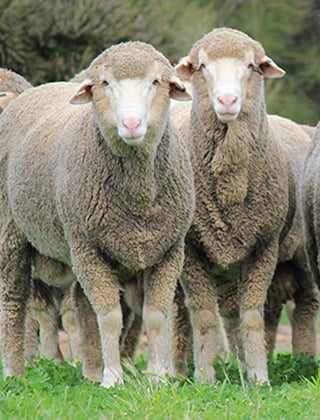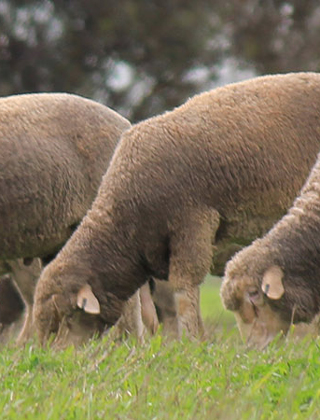Leveraging research from the MLP project

As the Merino Lifetime Productivity (MLP) project tracks ewes across the years, it is enabling research opportunities for site hosts and their affiliated organisations. Here we present an overview of some of the research that has been undertaken using MLP data.
A summary of the additional research projects featured in the June 2021 edition of Beyond the Bale (on pages 44-45). These projects, funded by both AWI and other project supporters, are utilising the F1 ewe and wether progeny from the MLP project to address additional compelling research questions facing the Merino industry.
In July of this year, the Association for the Advancement of Animal Breeding and Genetics (AAABG) held its 25th Conference in Perth, WA, at which four papers were presented that were generated using core MLP data with three of those papers featuring MLP Add-On project data. Here we provide an overview of these papers ahead of the main MLP analysis which will commence after the last data is collected at the New England site in July 2024.
The papers highlight genetic parameters that estimate the heritability of traits and their correlations with other traits.
Heritability describes how much of the observed difference between progeny is due to their genetics. Traits with higher heritabilities, such as fibre diameter, are predominately influenced by genetics and less so by unknown environmental factors. Highly heritable traits are easier to select for and change, while traits with lower heritabilities are more influenced by unknown environmental factors and are much slower to change through breeding. A very high heritability is greater than 0.46, high is 0.26 to 0.45, moderate is 0.16 to 0.25, low is 0.06 to 0.15, and very low is less than 0.05.
Genetic correlation is the association or genetic relatedness between two traits. Correlations are described as either positive or negative (or zero where no correlation exists). The effect of this is that when selecting for one trait, you may find changes in other traits in the progeny of selected animals. A very high correlation is 0.81 and above, high is 0.61 to 0.08, moderate is 0.31 to 0.60, low is 0.11 to 0.30, and very low is 0 to 0.1.
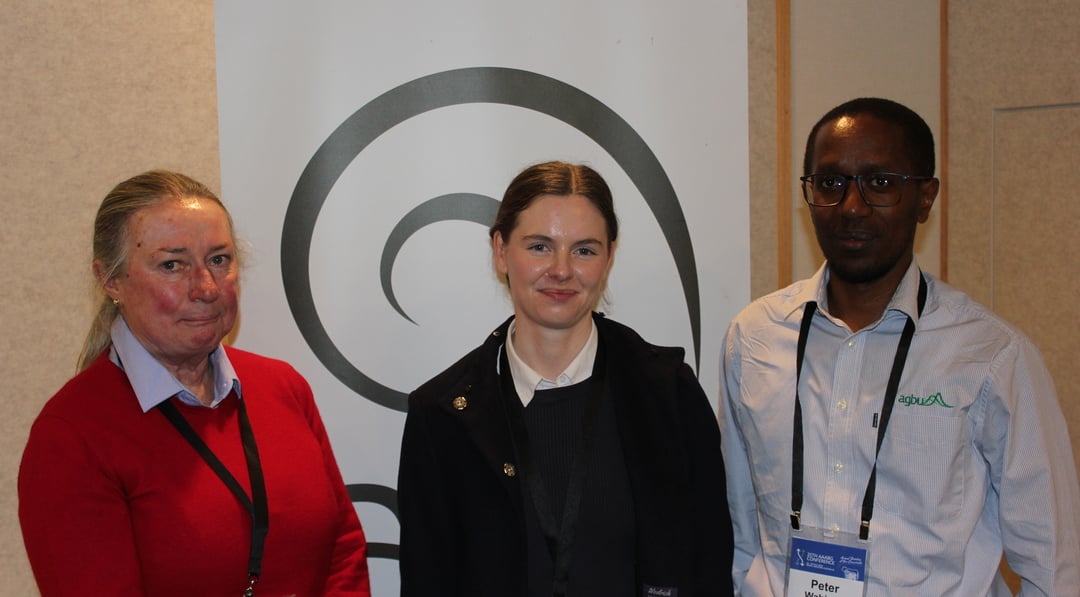
NSW DPI’s Dr Sue Mortimer, UNE postgraduate research student Erin Smith and AGBU’s Dr Peter Wahinya who presented the papers at the AAABG Conference that are outlined in this article.
Paper 1: Preliminary evaluation of the impact of visual traits on lifetime ewe performance
MLP analysis team member AGBU’s Dr Peter Wahinya presented a paper that featured preliminary heritability and correlation estimates between a subset of measured adult ewe traits with visual classing traits recorded at a young age. Peter looked at data across all five MLP sites up to the fourth year of age and, in an industry first, he explored the heritability of ewe survival and its correlation with early classing visual traits.
Peter found that heritability estimates were high to very high for body weight, eye muscle depth, fat depth, body wrinkle, breech wrinkle, breech cover and classer grade (0.32 – 0.64); moderate for urine stain (0.21) and legs score (0.23); and low for weaning rate (0.07) and ewe survival (0.06).
The analysis showed favourable relationships between visual classing traits and the subsequent performance of ewes including body weight, eye muscle depth, fat depth and weaning rate. Wrinkle also showed a moderate favourable relationship with ewe survival. Thus, emphasis on visual traits when selecting maiden ewes is likely to have beneficial effects on these adult measured traits. (This is a similar outcome to earlier breeding and selection trials.)
Once the full MLP dataset is complete in July 2024, this analysis will be revisited to include additional traits such as the fleece traits and full lifetime records (out to six- and seven-year-olds).
Paper 2: Comparison of udder and teat traits in Merino ewes recorded at lambing and weaning
As part of her UNE Rural Science honours thesis supported by Australian Wool Education Trust (AWET), Erin Smith undertook an Add-On project that saw the MLP project’s New England ewes receive additional measurements for udder conformation in 2020.
Erin’s work aimed to quantify the impact of udder traits on both lamb survival and weaning weight, and whether udder traits could be improved through selection. At the MLP New England 2022 field day, Erin shared that lamb mortality was significantly higher for ewes with unsound versus sound udders. Autopsy results showed that lambs from dams with unsound udders were significantly more likely to die from starvation than any other cause.
The paper presented at AAABG was based on further data collected from the MLP ewes in 2022 and focussed on preliminary parameter estimates to provide recommendations around how and when to record udder and teat traits to support lamb survival and weaning rates. Udder depth, teat size and teat placement were moderately to highly heritable at both lambing and weaning (0.23 to 0.36) and were highly correlated between the two stages for ewes that reared lambs to weaning. Udder cleft showed lower heritability, and lower genetic correlation across the two stages.
These results suggest that udder records could be collected at either lambing or weaning and that the udder characteristics will respond to selection. However, udder trait recording at lambing is likely to provide a better opportunity to identify unsound udders for ewes that lose lambs at birth.
This notable work, led by Erin and New England MLP Site Manager Jen Smith, is evidence that assessing udder and teat traits has the potential to improve both lamb survival and profitability outcomes for Merino flocks. A national scoring standard for udder traits is in development to facilitate submission of data to Sheep Genetics.
Paper 3: Relationships of sire breeding values for Merino production trait with eating quality of lamb
NSW DPI’s Dr Sue Mortimer authored two MLP project associated papers presented at the 25th AAABG conference – see this section and the next section.
In the first paper, Sue explored the relationships between sensory (taste testing) and objective eating quality traits (intramuscular fat and shear force as measures of flavour, juiciness and tenderness) on the key fleece and carcase Australian Sheep Breeding Values (ASBVs) for sires that were used to produce the 2018 drop MLP project Macquarie and New England wethers. This Add-On project was a co-investment between NSW DPI and MLA Donor Company.
Sue found that key trait group ASBVs (clean fleece weight, fibre diameter, staple strength, staple length, weight, fat and eye muscle) were not significantly associated with either overall consumer liking scores of loin, knuckle and topside cuts, or intramuscular fat and shear force of the loin. This is good news for the Merino industry, as it suggests we can include eating quality traits in future indexes without expecting any deleterious impact on key Merino production traits. These findings will be further tested by combining the MLP dataset with other available industry data.
Paper 4: Ewe genotype effects on genetic evaluation of Merino fleece trait across ages
The final paper outlined here touches on work that was featured in the June 2023 edition of Beyond the Bale.
The Macquarie MLP project site was developed with two distinctly different ewe types to facilitate research to explore whether current genetic analysis accounts effectively for interactions between ewe type and ram performance.
Dr Sue Mortimer’s analysis of the data up to the third adult shearing shows the two ewe types do influence the fleece traits across age stages. However, despite these differences in average performance, the ranking of sires for production traits is generally consistent across the two ewe types. There is some minor evidence of re-ranking of sire performance, although overall the paper suggests a correlation of greater than 0.7 across the two ewe bases. This supports the methods adopted by MERINOSELECT genetic evaluations that routinely fit sire by flock-year interactions to account for ewe bloodline source plus seasonal effects.
Once the complete dataset is available (end of 2023), it is anticipated that this analysis will be revisited to test these findings.
Wrap up
While the analysis results outlined here are preliminary, they provide encouraging news for the Merino industry. The papers presented highlight the value of sheep classing, the importance of selecting for sound udders, that future breeding programs can select for eating quality without impact on key production traits and, finally, that MERINOSELECT is able to account for most of the sire by ewe genotype interactions.
It’s exciting to see early analysis emerging from the MLP project and we expect the analysis to gather momentum as we edge closer to having a complete and unique Merino lifetime dataset.
MLP QUICK FACTS
The AWI-funded MLP project is a $13 million ($8 million from AWI plus $5 million from project partners), 10-year venture between AWI, Australian Merino Sire Evaluation Association (AMSEA), nominating stud Merino breeders and site partners.
-
Balmoral, Vic
Partner: Tuloona Pastoral
Committee: Balmoral Breeders Association -
Pingelly, WA
Partner: Murdoch University/UWA
Committee: Federation of Performance Sheep Breeders (WA Branch) -
MerinoLink, Temora, NSW
Partner: Moses & Son
Committee: MerinoLink Inc. -
Macquarie, Trangie, NSW
Partner: NSW DPI
Committee: Macquarie Sire Evaluation Association -
New England, NSW
Partner: CSIRO
Committee: New England Merino Sire Evaluation Association
The MLP project is tracking the lifetime performance of 5,700 ewes as they proceed through four to five joinings and annual shearings.
A full suite of assessments will be undertaken including visual trait scoring, classer gradings, objective assessments of a range of key traits and index evaluations.
A unique and extensive dataset will result and be used to enhance existing Merino breeding and selection strategies, for both ram sellers and buyers, to deliver greater lifetime productivity and woolgrower returns.
To stay up to date with the latest MLP findings, visit Merino Lifetime Productivity. Subscribe to MLP updates via www.merinosuperiorsires.com.au/contact-us
This article appeared in the September 2023 edition of AWI’s Beyond the Bale magazine. Reproduction of the article is encouraged.






